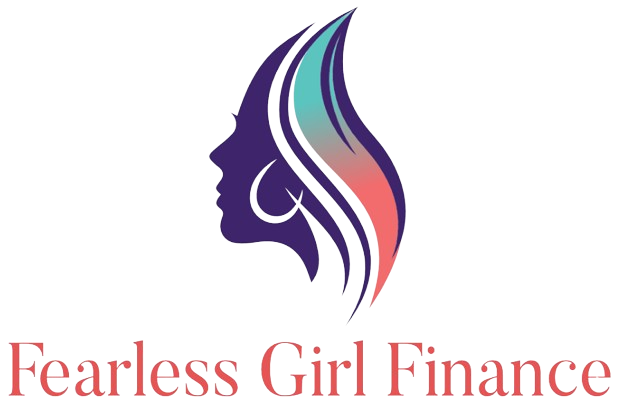
Living a FIRE life – how to calculate your financial independence
If you’ve been reading this blog for a while, you’ll know that we are working our way towards a life in a beach shack with an unlimited supply of coconuts. But with the rising cost of living and the ever-increasing demands of modern-day slavery (*ahem* paid employment), it can seem more likely that the majority of people will end up working until their eighties, while that line on the horizon representing the coconut lifestyle keeps moving further and further away.
That’s why more and more people are declaring themselves to be part of the FIRE movement aka reach Financial Independence, Retire Early.
What is FIRE?
It’s said that we all have two lives, and the second starts when you realise you only have one. FIRE is based on this concept. Why are we spending our one life working hard and waiting for retirement at 65, 70, 89 – or whatever arbitrary age our government decides for us? The movement started in 1992 when authors Vicki Robin and Joe Dominguez released Your Money or Your Life. They asked the kind of questions that leave you staring into the void, like:
- How much of your life are you willing to trade in pursuit of more money?
- When you calculate how much time and energy it took you to buy something, was it worth it? Do you still like it when you think about what else you could have done with that money?
Sometimes the answer to the second question is yes and there are absolutely products that can enrich your life, but for the majority of material goods, the answer is usually no. Financial Independence isn’t based on the concept of being rich. It’s based on the concept of having enough. It’s about spending mindfully, investing sensibly and living an intentional life, without being beholden to an employer.

But only the super-rich can afford to retire early?
The truth is that FIRE is for anyone, but you will probably need to accept that your version of FIRE is not the same as someone born into a life of luxury – just as your day-to-day life now doesn’t look like theirs. If you want your FIRE plan to include business class flights and a live-in maid, think about how that matches up with your lifestyle now.
Remember that FIRE isn’t about absolute numbers. It’s all about the relationship between your income and your expenses. You might need to sacrifice more on a lower wage but it is do-able. And there are different types of FIRE, so you can make financial independence work for your life.
What does FIRE look like for me?
There are different categories of FIRE, and that’s what makes it applicable to just about anyone.
Lean FIRE
This is for the minimalists among us. Think extreme frugality, during your journey to FIRE as well as when you have achieved it. Annual expenses below $40,000 are considered to be Lean FIRE.
Coast FIRE
This is when you plan to retire at the traditional age of 65, but don’t want to spend your life investing huge sums of money. People who work towards Coast FIRE invest until they have reached a number that will grow to their FIRE number through interest. For example, investing $200,000 and not adding any more or touching that money until retirement.
Fat FIRE
This is luxury FIRE. Business class tickets and champagne brunches all day, every day. It typically allows for annual expenses of upwards of $100,000. This might be the FIRE we all dream of, but it is definitely the most unattainable.
Barista FIRE
This is what Fearless Girl Finance is aiming for. It allows you to draw a set amount from your investments each year, and, at the same time, work at a job which allows you to supplement your income. The key component here is that it should be something you love, like teaching yoga, working for a charity or learning how to be a really good barista (hence the name).
For most people, this the most flexible and sustainable type of FIRE, as it allows you the freedom to do what you really love without giving up work entirely. The right work can give us purpose, keep us social and make us feel fulfilled. Life is short, but a lack of purpose can make it feel long. Are you really ready for a lifetime of bingo?

I want to live this life! But…how?
The first thing you need to do is work out your Financial Independence (FI) number. Ask yourself the following questions to work out your estimated monthly expenses:
- Where do I want to live and what does the cost of living look like?
- Do I need to account for healthcare?
- Who are my dependents and how much money do I need to account for them?
- What type of FIRE am I hoping to achieve?
- Do I live to travel or am I a happy homebody?
Your monthly expenses will be dramatically different if you are a DINK (double income, no kids) couple living in a mortgage-free property in a satellite town than if you are a family of four living in rented accommodation in a city centre.
Once you have worked out your monthly expenses, multiply it by 12 to get your annual expenses. This is where we start to get closer to our FIRE number. From here, you will follow the Rule of 25 and the 4% Rule.
The Rule of 25
Multiply your estimated annual expenses by 25. As an example, if you estimate that you will need $40,000 per year to live comfortably, then you calculate $40,000 x 25, which is a cool million dollars. This is how much you would need to stop working for the rest of your life.
The 4% Rule
If you retire with $1 million aged 40, you will hopefully live a lot longer than 25 years. The 4% rule safeguards your capital by assuming that you can withdraw 4% of your portfolio each year ($40,000) and adjust for inflation. If the cost-of-living rises by 2%, you withdraw an extra 2% of $40,000 to make up for it. This theory has been tested to last over three decades, as the interest you make on your investments allows your portfolio to remain stable against your withdrawals.
Once you have your FIRE number, you need to think about how long it will take you to get there. Most people who are working towards FIRE are focused on two things:
- Living frugally and well below their means (click here for our series on how to create the best frugal budget)
- Investing as much as they can in global ETFs (learn everything you need to know about ETFs here!)
Your number might have made you want to faint. That’s ok, mine did too. But there are things you can do to make FIRE more attainable. Keep working at your investment plan. Go over your budget again and check if there is anywhere you can make cutbacks. Look into side hustles – with the added benefit that these might become the work that bring you joy in Barista FIRE. And remember, FIRE is about having the freedom to make choices for yourself. Your realistic FIRE plan might look completely different from what you imagined when you first started reading. But it’s more precious because it’s yours.
Is FIRE something you would consider? Has your FIRE number shocked you? Let us know in the comments below or tag us on Instagram @fearlessgirlfinance_




Add A Comment